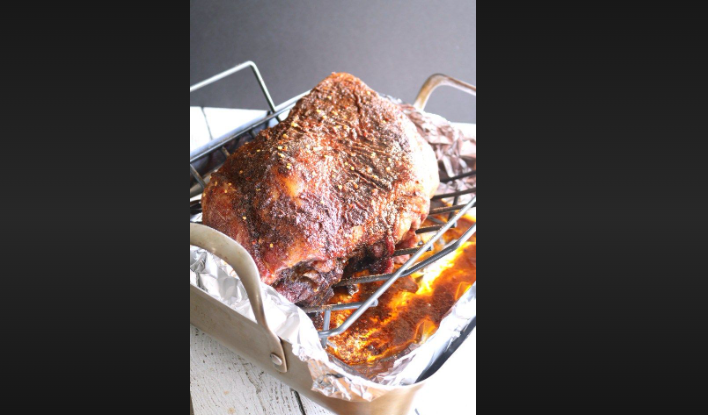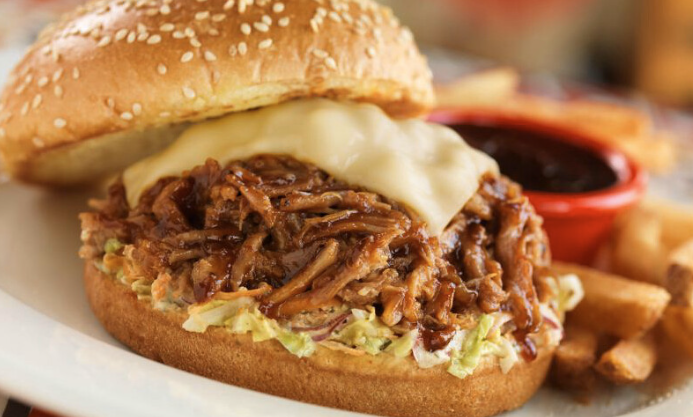Can You Pull Pork the Next Day? Exploring the Best Practices for Storing and Pulling Pork
Pulled pork is a beloved dish that is often prepared in large quantities for gatherings or future meals. But what if you have leftover pork and want to enjoy it the next day? In this article, we will address the common question, "Can you pull pork the next day?" and provide you with insights into the best practices for storing and pulling pork to maintain its flavor and texture. Whether you're planning for a delicious meal or looking to make your leftovers shine, we've got you covered.

Oven puller pork
1. Understanding the Nature of Pulled Pork:
Before discussing whether you can pull pork the next day, it's important to understand the nature of pulled pork.
Pulled pork is typically slow-cooked over several hours until the meat becomes tender and easy to pull apart.
This process breaks down the collagen and connective tissues, resulting in a flavorful and succulent dish.
2. Storing Pulled Pork:
If you plan to enjoy your pulled pork the next day, proper storage is crucial to maintain its quality. Follow these guidelines for storing pulled pork:
-
Let it Cool: Allow the pulled pork to cool to room temperature before refrigerating or freezing. This helps prevent condensation, which can affect the texture and quality of the meat.
-
-
Refrigeration: If you intend to consume the pulled pork within a day or two, store it in an airtight container or a zip-top bag in the refrigerator. Properly stored, pulled pork can last up to three days in the fridge.
-
-
Freezing: For longer storage, freezing is a viable option. Place the pulled pork in an airtight container or wrap it tightly in heavy-duty foil or freezer bags. Label the packaging with the date to keep track of its freshness. Frozen pulled pork can remain safe to eat for up to three months.
-
3. Reheating Pulled Pork:
When it's time to enjoy your pulled pork the next day, proper reheating is key to preserving its texture and flavor. Here's how to reheat pulled pork:
-
Oven: Preheat your oven to a low temperature, around 250°F (120°C). Place the pulled pork in an oven-safe dish and cover it with foil to prevent drying. Reheat for approximately 20-30 minutes or until the internal temperature reaches 165°F (74°C).
-
-
Slow Cooker: Place the pulled pork in a slow cooker and add a little bit of liquid, such as barbecue sauce or broth, to prevent drying. Cook on low heat for 2-4 hours, stirring occasionally, until the meat is heated through.
-
-
Microwave: If you're short on time, you can use the microwave to reheat small portions of pulled pork. Place the pulled pork in a microwave-safe dish, cover it with a damp paper towel to retain moisture, and heat in short intervals, stirring in between, until it's thoroughly heated.
-
4. Ensuring Quality and Safety:
While it is generally safe to pull pork the next day, it's important to ensure its quality and safety. Follow these additional tips:
-
Smell and Appearance: Before consuming pulled pork, check for any signs of spoilage, such as a sour or off-putting odor or a significant change in appearance. If the meat looks or smells questionable, discard it to avoid foodborne illnesses.
-
-
Proper Handling: Always practice good hygiene and proper handling when preparing, storing, and reheating pulled pork. Wash your hands thoroughly, use clean utensils, and avoid cross-contamination with other foods.
-
-
Internal Temperature: To ensure the pulled pork is safe to eat, use a food thermometer to check its internal temperature. It should reach a minimum of 165°F (74°C) to kill any potential bacteria.

Cheese and pork
You can pull pork the next day and still enjoy its deliciousness, provided you follow proper storage and reheating techniques. Whether refrigerating or freezing, ensure that the pulled pork is stored in airtight containers to maintain its flavor and prevent moisture loss. When reheating, use gentle methods like the oven, slow cooker, or microwave to avoid overcooking and drying out the meat. Remember to prioritize safety by checking for signs of spoilage and verifying the internal temperature before consuming. With these tips, you can confidently enjoy tender and flavorful pulled pork, even when prepared in advance.